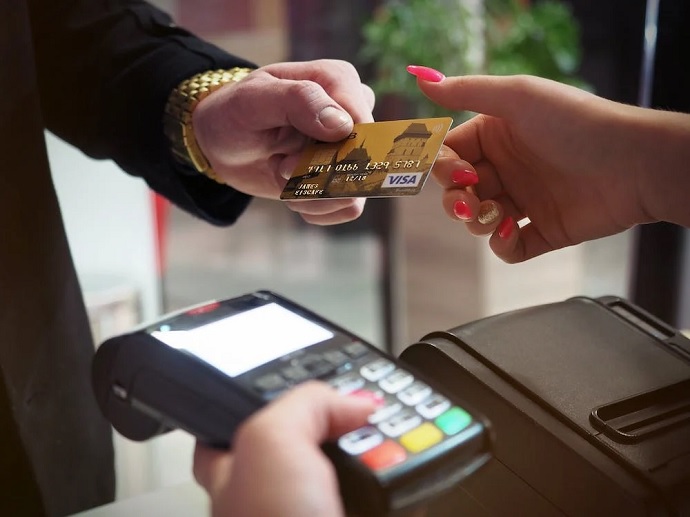Supplementary Credit Card

Financial management is an essential skill that is best learned before one becomes an adult. Perhaps you’re keen on transferring this skill to your teenager by putting them in charge of a supplementary credit card that is an extension of your account. This can be one way of giving them practical lessons about responsible spending and credit management. Plus, should you ever take up this offer from a credit card Philippines-based bank issued to you, you’ll have an easier time tracking their education, transportation, and other expenses.
But before you make this important decision, there are some crucial factors you should consider. After all, a credit card—be it an extension or not—is a significant responsibility, especially for a teen. As a parent, you have to consider your child’s readiness for a card and set some guidelines. This way, your child will have a better chance of picking up the financial management lessons you want to impart to them.
Here are some of the factors that you should consider when determining whether your teen can have an extension credit card or not:
Your Teen’s Level of Financial Responsibility
First and foremost, you need to consider whether or not your teenager is responsible enough to handle a credit card on their own. You can do this by observing their money management habits, such as how they handle their allowance, whether or not they are building their savings, or how they evaluate what to spend their money on. If they’re handling their finances well, the next thing you should do is educate them about the benefits and risks that come with using a credit card and how managing their credit well can benefit them in the long run. An informed and financially responsible teenager is more likely to make smart and practical spending decisions and avoid accumulating debt.
The Purpose of the Extension Credit Card
Before obtaining a supplementary credit card for your teenager, it’s crucial to establish a clear purpose for the said card. Are you providing it for emergencies, teaching financial responsibility, or helping with specific expenses like transportation or school supplies? Defining the card’s purpose will guide both you and your teenager in setting spending boundaries. For instance, if it’s for emergencies, emphasize that the card should only be used in urgent situations. By setting a purpose, you can help your teenager understand the card’s role in their financial life and avoid unnecessary spending.
The Spending Limit for the Credit Card
One of the key considerations when getting a supplementary credit card is setting the appropriate credit limit. The amount should align with your family’s financial capacity and your teenager’s income if they have one. Setting a reasonable limit helps your teenager—and by extension, you—avoid excessive spending and potential debt. It’s essential to discuss the card’s limit with your teenager and explain the importance of staying within it.
How to Monitor and Control the Card
It’s crucial to provide your teenager with a credit card that has features for monitoring activity so you can track their spending habits. Many Philippine banks offer mobile apps or online account access that lets you check transactions in real-time. Monitoring your teen’s spending in this manner not only helps you keep an eye on their purchases but also allows you to detect any unusual or unauthorized activity promptly. Additionally, tracking tools can help you discuss practical and data-based spending habits with your teenager.
Who Will Be Responsible for the Payment
Another vital aspect to consider is who will be responsible for making payments on the supplementary credit card. Will your teenager be expected to make contributions to payments, or will you cover the entire bill? It’s essential to establish a clear repayment plan. If your teenager is responsible for payments, educate them about the importance of paying bills on time to avoid interest charges and negative impacts on their credit history. This responsibility can be an excellent learning opportunity for them.
The Fees and Charges That Come with the Add-on Card
Before getting a supplementary credit card for your teenager, make them aware of the associated fees and charges. Credit cards have annual fees, interest rates, and penalty charges. Go over these details with your teen and choose a card with reasonable terms and conditions that align with your family’s budget. Make sure your teenager understands these costs and the consequences of not paying their bills on time.
Your Child’s Level of Financial Education
Consider giving your teen a focused discussion on financial literacy to help them better understand personal finance and credit management. Financial education can significantly benefit their ability to use a credit card responsibly. Explore online courses, books, or seminars tailored to teenagers that cover topics like budgeting, saving, and credit management. This knowledge can empower them to make informed financial decisions.
Providing your teenager with a supplementary credit card can be a valuable step in teaching them financial responsibility and independence. By carefully considering the above-mentioned factors and guiding your teen in making smart choices, you empower them to utilize credit wisely and build healthy financial habits. Together, you can build a strong foundation for your teen’s financial future.